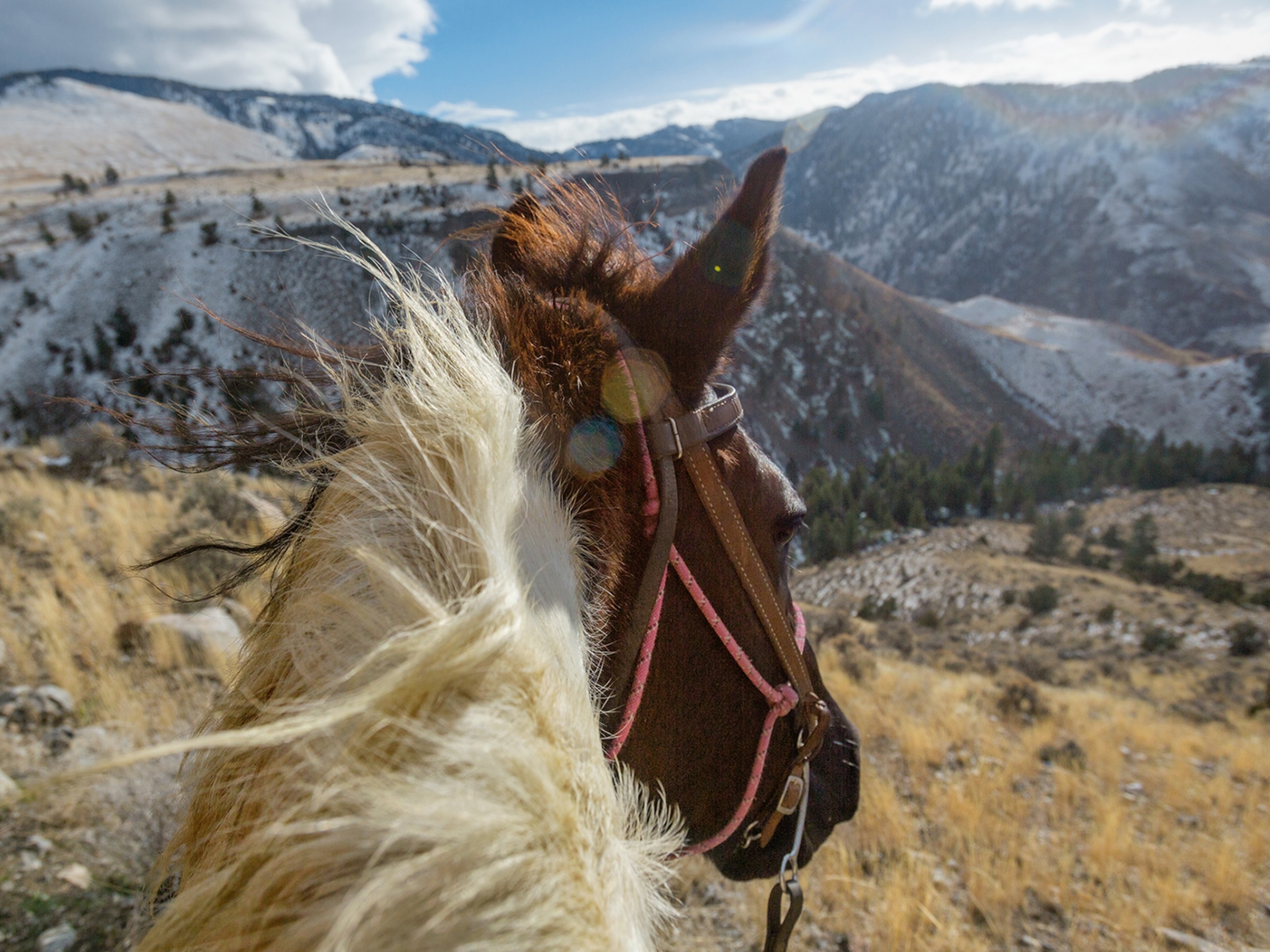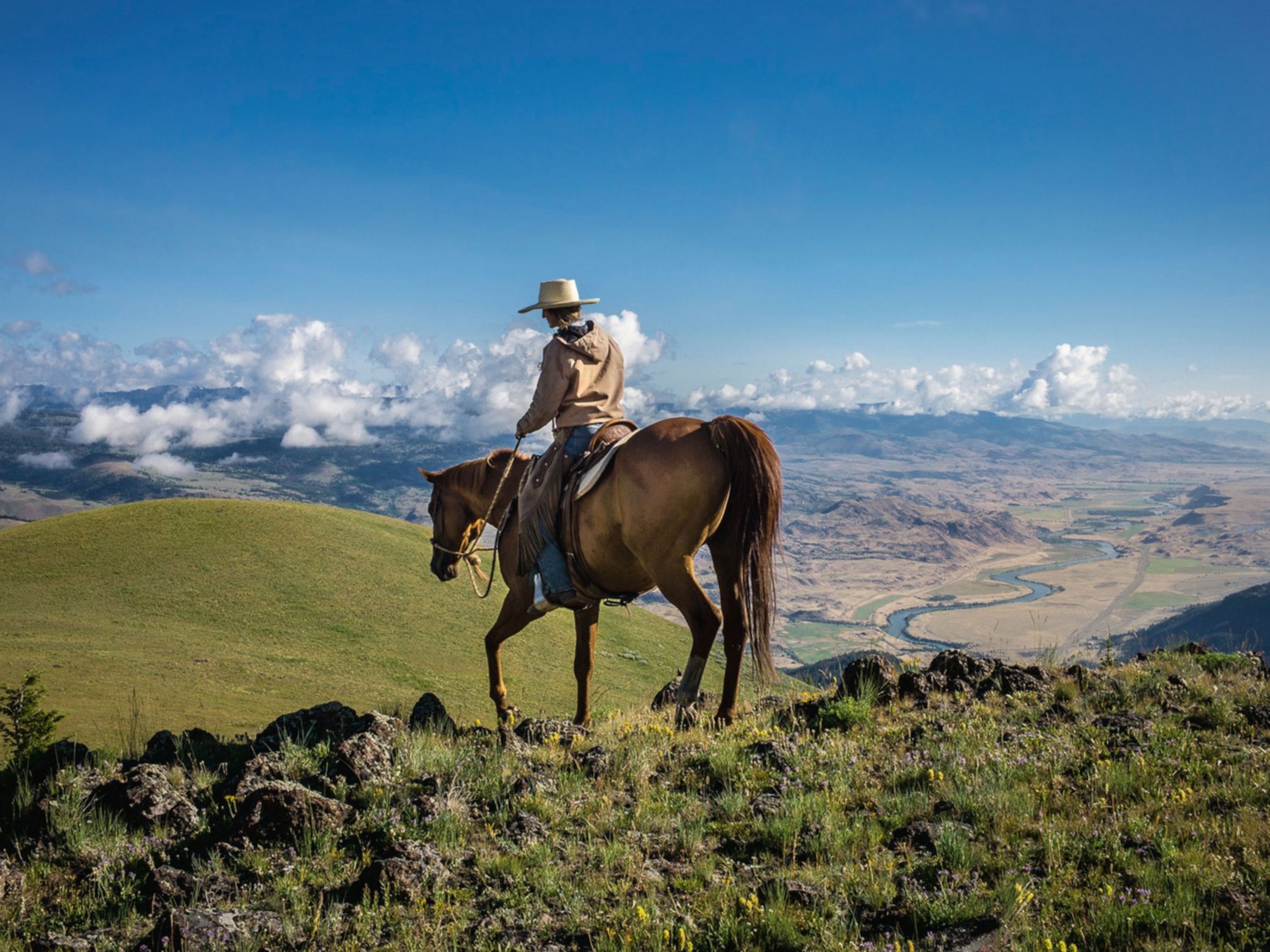
The Mighty Microbes of Yellowstone
Scalding water is home to what microbiologists call extremophiles, heat-loving creatures that have figured in many scientific breakthroughs.
Yellowstone is a great refuge not just for large, charismatic creatures but also for microscopic ones. Its 10,000 hydrothermal features—steamy vents, sulfurous mud pots, hot springs—support a broad diversity of microbes. Among them, unusual creatures that microbiologists call extremophiles, which have figured in significant scientific discoveries.

In 1965 Thomas Brock of Indiana University noticed “pink gelatinous masses of material, obviously biological, at surprisingly high temperatures” in Octopus Spring. These stringy organisms were growing at 180 degrees Fahrenheit, an astonishing feat, at a time when bacterial life was thought impossible above 140. One year later Brock returned with a student named Hudson Freeze, and together they collected a different organism, a yellowish, heat-loving bug that Brock named Thermus aquaticus. Culturing T. aquaticus yielded a DNA-copying enzyme that works at high temperatures—and that enzyme made practical the technique of polymerase chain reaction. Now an essential tool in molecular biology, PCR earned inventor Kary Mullis the Nobel Prize in chemistry in 1993.
About that time University of Colorado microbiologist Norman Pace led a team doing microbial analyses in Yellowstone. In samples gathered at Obsidian Pool, using PCR and other methods, the team found many new life-forms within Archaea, a vast and anomalous domain distinct from bacteria. The park’s role in microbiology’s history had completed a circle: Organism leads to tool, which leads to organism. And the work continues.






In a spectacular yearlong event, the National Geographic Channel series America’s National Parks will show you the parks’ natural wonders—both big and small—as you have never experienced them before. Learn more about the series.
Related Topics
You May Also Like
Go Further
Animals
- Octopuses have a lot of secrets. Can you guess 8 of them?
- Animals
- Feature
Octopuses have a lot of secrets. Can you guess 8 of them? - This biologist and her rescue dog help protect bears in the AndesThis biologist and her rescue dog help protect bears in the Andes
- An octopus invited this writer into her tank—and her secret worldAn octopus invited this writer into her tank—and her secret world
- Peace-loving bonobos are more aggressive than we thoughtPeace-loving bonobos are more aggressive than we thought
Environment
- Listen to 30 years of climate change transformed into haunting musicListen to 30 years of climate change transformed into haunting music
- This ancient society tried to stop El Niño—with child sacrificeThis ancient society tried to stop El Niño—with child sacrifice
- U.S. plans to clean its drinking water. What does that mean?U.S. plans to clean its drinking water. What does that mean?
- Food systems: supporting the triangle of food security, Video Story
- Paid Content
Food systems: supporting the triangle of food security - Will we ever solve the mystery of the Mima mounds?Will we ever solve the mystery of the Mima mounds?
History & Culture
- Strange clues in a Maya temple reveal a fiery political dramaStrange clues in a Maya temple reveal a fiery political drama
- How technology is revealing secrets in these ancient scrollsHow technology is revealing secrets in these ancient scrolls
- Pilgrimages aren’t just spiritual anymore. They’re a workout.Pilgrimages aren’t just spiritual anymore. They’re a workout.
- This ancient society tried to stop El Niño—with child sacrificeThis ancient society tried to stop El Niño—with child sacrifice
- This ancient cure was just revived in a lab. Does it work?This ancient cure was just revived in a lab. Does it work?
Science
- The unexpected health benefits of Ozempic and MounjaroThe unexpected health benefits of Ozempic and Mounjaro
- Do you have an inner monologue? Here’s what it reveals about you.Do you have an inner monologue? Here’s what it reveals about you.
- Jupiter’s volcanic moon Io has been erupting for billions of yearsJupiter’s volcanic moon Io has been erupting for billions of years
- This 80-foot-long sea monster was the killer whale of its timeThis 80-foot-long sea monster was the killer whale of its time
Travel
- This town is the Alps' first European Capital of CultureThis town is the Alps' first European Capital of Culture
- This royal city lies in the shadow of Kuala LumpurThis royal city lies in the shadow of Kuala Lumpur
- This author tells the story of crypto-trading Mongolian nomadsThis author tells the story of crypto-trading Mongolian nomads




